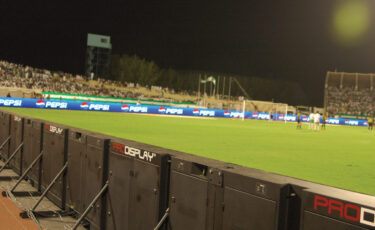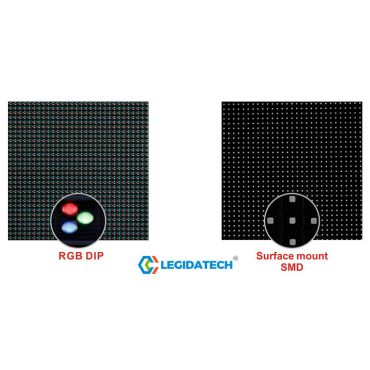1.What is LED display gray scale?
2.What is the effect of gray level on the display effect of LED display?
3.In different application scenarios, how to choose the gray level of LED display?
4.The gray level development trend of LED display
5.what factors affect the gray level of the LED display.
6.How to adjust the gray level of LED display according to the comprehensive parameters of LED display?
7.LED display brightness and gray relationship?
8.What is the impact of gray level on the price of LED display?
1.What is the gray level of LED display?
LED display gray is one of the important parameters of LED display, LED display gray is the LED color level or gray level, refers to the brightness of LED display, LED display gray level refers to the LED display in the same level of brightness from the darkest to the brightest between the brightness level can be distinguished.
At present, the gray level of LED display mainly has 8bit, 10bit, 12bit, 14bit, 16bi and so on, we usually come into contact with
16bit is relatively high, its color has been very rich, it refers to the RGB three primary colors, each primary color can be divided into 2 power of 16 levels of gray, that is, 65536, then from black to white there are 65536 kinds of brightness changes
LED display gray level determines the color of the LED display, in general, the higher the gray level, the richer the color display, the more delicate the picture, and the easier to perform rich details.
LED display grayscale has no grayscale, 8 level, 16 level, 32 level, 64 level, 128 level, 256 level, 1024 level, etc., the domestic LED display mainly uses 8-bit processing system, international brand LED display mainly uses 10-bit processing system.
1, 8-bit processing system, that is, 256 (2 to the 8 power) level gray, simple understanding is from black to white a total of 256 kinds of brightness changes.
2, 10-bit processing system, that is, 1024 (2 to the 10th power) level gray, simple understanding is from black to white a total of 1024 kinds of brightness changes.
3, 12-bit processing system, that is, 4096 (2 to the 12th power) level grayscale, simple understanding is that there are 4096 kinds of brightness changes from black to white.
4, 14-bit processing system, that is, 16384 (2 to the 14th power) level grayscale, simple understanding is from black to white a total of 16384 kinds of brightness changes.
5, 16 bit processing system, also 65536, then from black to white there are 65536 brightness changes.

2.What is the effect of gray level on the display effect of LED display
LED display gray level refers to the degree of change in brightness of LED when displaying images. The higher the gray level indicates that the more layers it has from light to dark, and the color required by the dark system part can still be displayed in a rich way. The richer the layers, the smoother the color levels, and the more supple and uniform the display effect.
The low gray LED display screen transition is not natural enough, the overall display effect is greatly reduced, so from the overall display effect, there is no doubt that the gray level of the LED display screen is higher, the better.
3.In different application scenarios, how to choose the gray level of LED display?
Although gray is the determining factor of the number of colors, but not to say that the greater the unlimited the better, because the human eye resolution is limited, moreover, the improvement of the system processing bits will involve the system video processing, storage, transmission, scanning and other aspects of the change, the cost increases, the cost performance decreases. In general, outdoor advertising LED display and indoor advertising LED display can use 8-bit system, and indoor conference hall, television broadcasting hall, stage LED display, church LED display, 3D LED display,LED screen for XR and other application scenarios can use 10-bit system or 16-bit system.

4.The gray level development trend of LED display
16-bit LED display processing system is becoming more and more popular. With the development trend of the resolution of indoor LED display, the resolution is getting larger and larger, and the spacing of pixels is getting smaller and smaller. The gray level requirements for LED display will be higher and higher. So the high gray LED display in the indoor application scene more and more.
5.what factors affect the gray level of LED display.
The first is the choice of constant current driver IC for our LED display. Because the design of the IC production supplier IC determines the gray level of the display. Second. The control system of the LED display also affects the gray level of the display. For example, video processor and other video source gray level processing. Third: the brightness and refresh rate of the LED display also affect the gray level of the LED display, generally their relationship is inversely proportional. For example, the higher the gray level of the LED display, the brightness and refresh rate of the LED display will be correspondingly reduced.
6.How to adjust the gray level of LED display according to the comprehensive parameters of LED display?
6.1Brightness: Adjust the brightness of the display according to the use of the LED display environment, ensure that it is not too bright or too dark.
6.2Contrast: Adjust the contrast of the LED display to enhance the detail and clarity of the image. But be careful not to overdo it, or the image will appear too bright or too dim.
6.3Color temperature: The color temperature controls whether the color of the screen is biased toward blue or yellow, and there are usually two options for cool and warm colors. If you need a more realistic color, you should choose a warmer color temperature.
6.4RGB balance: RGB balance adjusts the ratio of red, green and blue colors to achieve the best state.
6.5Color saturation: Adjust the saturation to control the vividness of the color. For images that need to be more vibrant, you can increase the saturation appropriately, but don’t overdo it.
6.6Grayscale balance: Grayscale balance adjusts the gray area in the middle between black and white to make the image appear more balanced and realistic.
Calibration: For colors that need to be more accurate, you can use professional calibration tools to adjust them to ensure that the colors are accurate.
7.LED display brightness and gray level of the relationship?
The brightness discrimination level refers to the brightness level between the blackest and whitest images that the human eye can distinguish. The gray level of the display screen mentioned earlier is very high, which can reach 256 or even 1024 levels. However, due to the limited sensitivity of the human eye to brightness, these gray levels can not be fully recognized. That is to say, many adjacent levels of gray may look the same to the human eye. And eye discrimination varies from person to person. For the display screen, the more level of human eye recognition is naturally the better, because the image displayed is for people to see after all. The more brightness levels that the human eye can distinguish, the larger the color space of the display, and the greater the potential for displaying rich colors. The brightness identification level can be tested with special software, and the general display can reach more than 20 levels, which is a better level.
At present, the so-called 4096 gray level or 16384 gray level or higher of some domestic control system suppliers refers to the size of gray space after nonlinear transformation. Level 4096 is the use of 8-bit source to 12-bit space of the non-linear transformation technology, 16384 is the use of 8-bit to 16-bit non-linear transformation technology. By the 8-bit source to do nonlinear transformation, the converted space is definitely larger than the 8-bit source. It is generally at least 10 bits. As with grayscale, this parameter is not the bigger the better, generally 12 bits can do enough transformation.
What are the brightness requirements for the screen body?
General brightness requirements are as follows:
(1) Indoor: >800CD/M2
(2) Semi-indoor: >2000CD/M2
(3) Outdoor (sitting south facing north) : >4000CD/M2
(4) Outdoor (sitting north facing south) : >8000CD/M2
What kind of brightness requirements do red, green and blue have in terms of white composition?
Red, green and blue contribute differently to the finish of white. The root cause is that the retina of the human eye perceives different wavelengths of light differently. After a large number of experiments, the following approximate proportions are obtained for reference design:
Simple red-green-blue brightness ratio: 3:6:1
The precise red-green-blue brightness ratio is: 3.0:5.9:1.1
In summary, it is not difficult to see that the gray level and brightness of the led display are related to each other and have their own differences, and the gray level and brightness are not the larger the value, the better.
8.What is the impact of gray level on the price of LED display?
Choose low gray IC,LED display production cost relative to high gray level IC is lower.
Choose a low-gray LED display, because the increase in the processing bits of the control system will involve changes in various aspects of the system video processing, storage, transmission, scanning, etc., so the corresponding control system video processor is also much cheaper.
In summary, the value of the gray level is proportional to the cost of the LED display. We need to choose different gray level of LED display according to different application scenarios. In the reasonable range of our investment budget, to achieve the maximum return.
Summary: When we choose to buy LED display, we have to buy the appropriate grayscale LED display according to the application scenario, the brightness of LED display and the cost budget of LED display.





